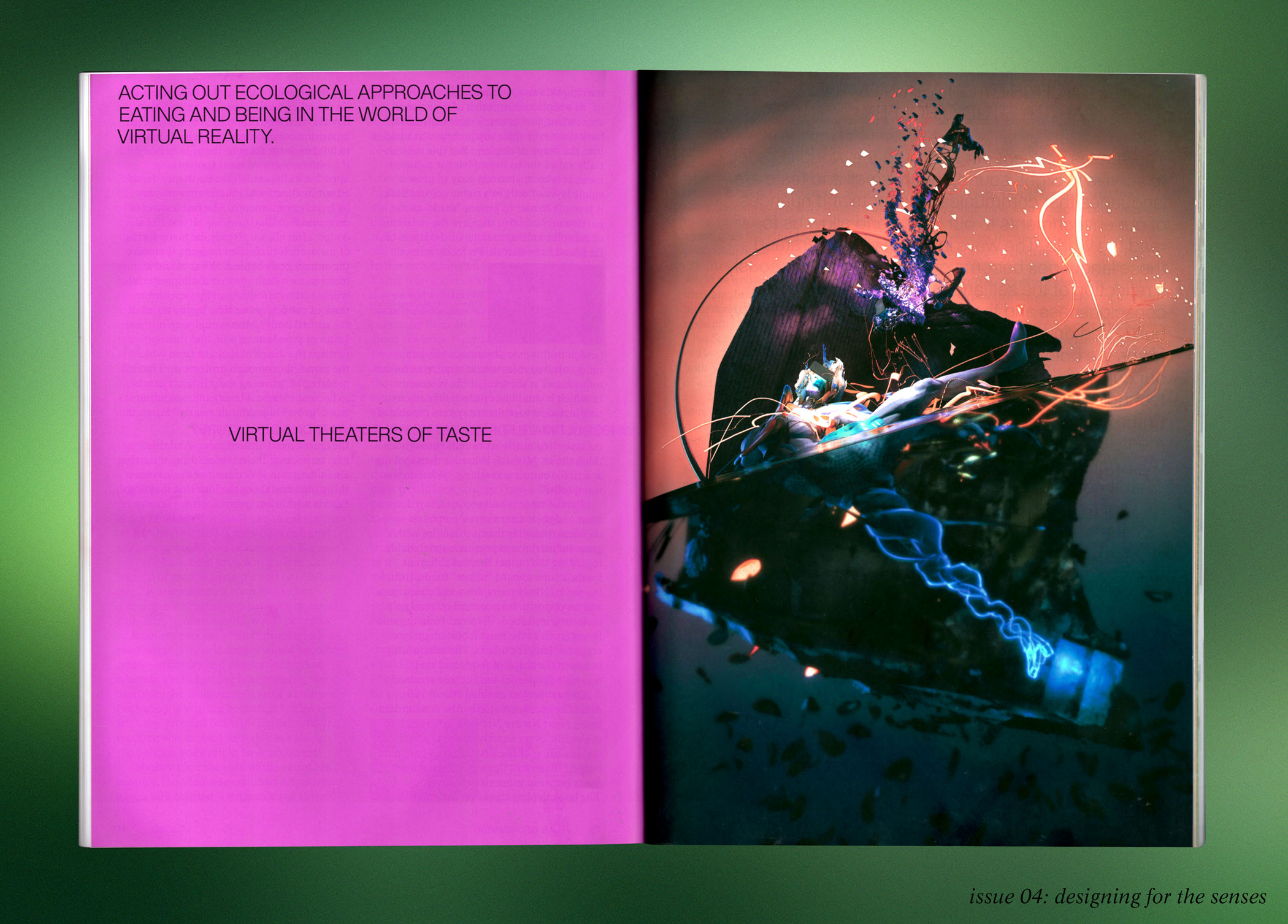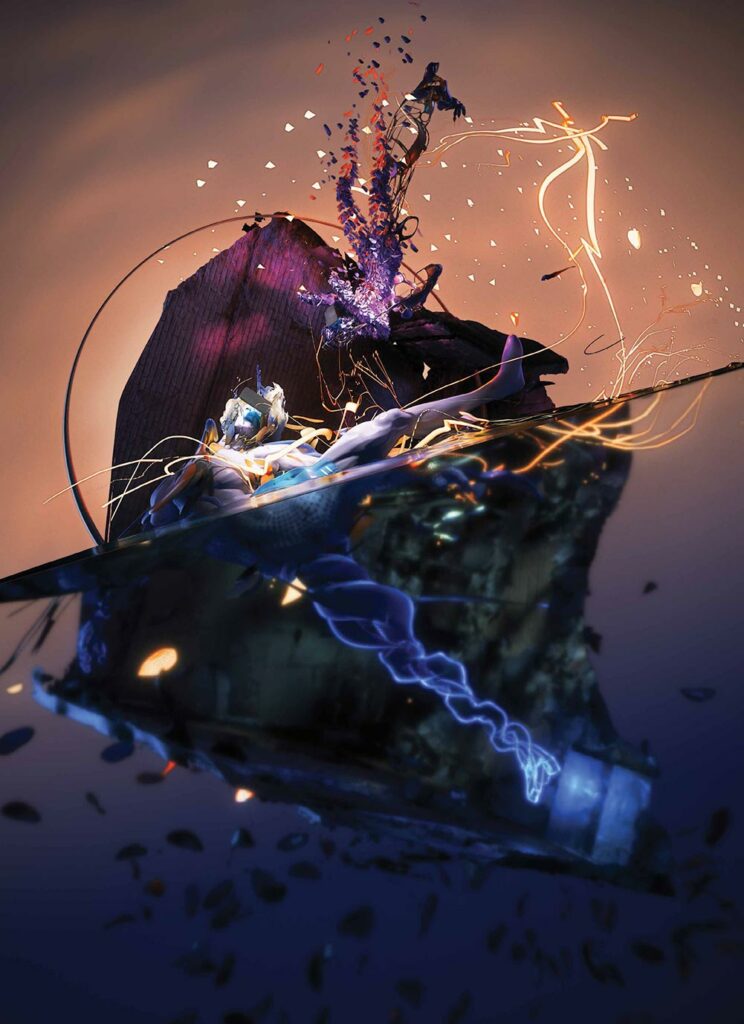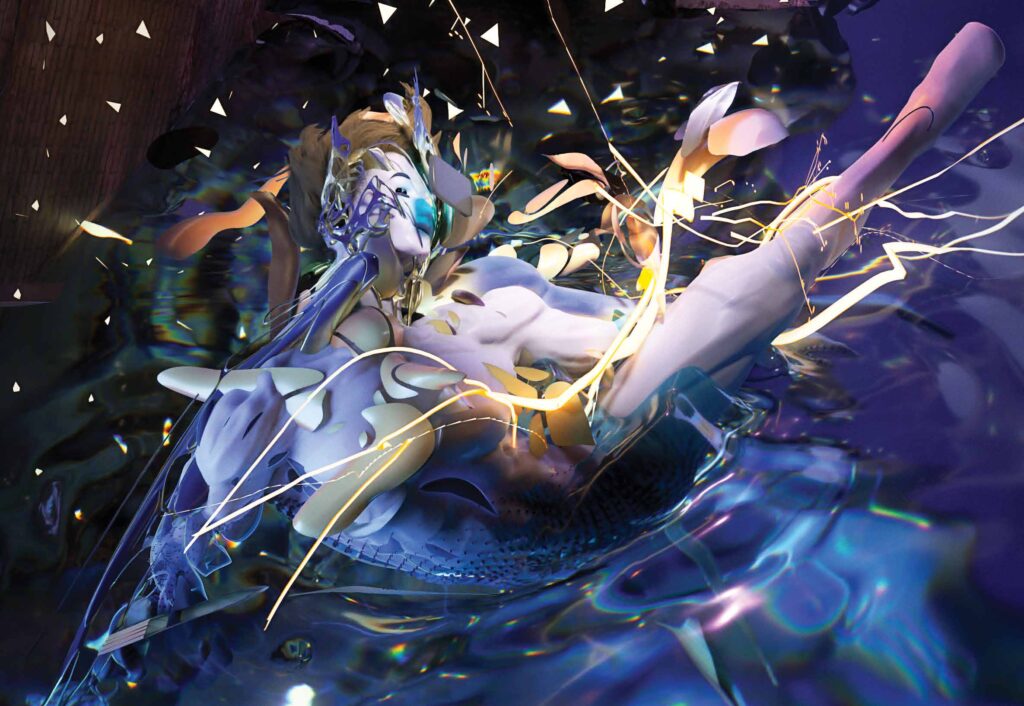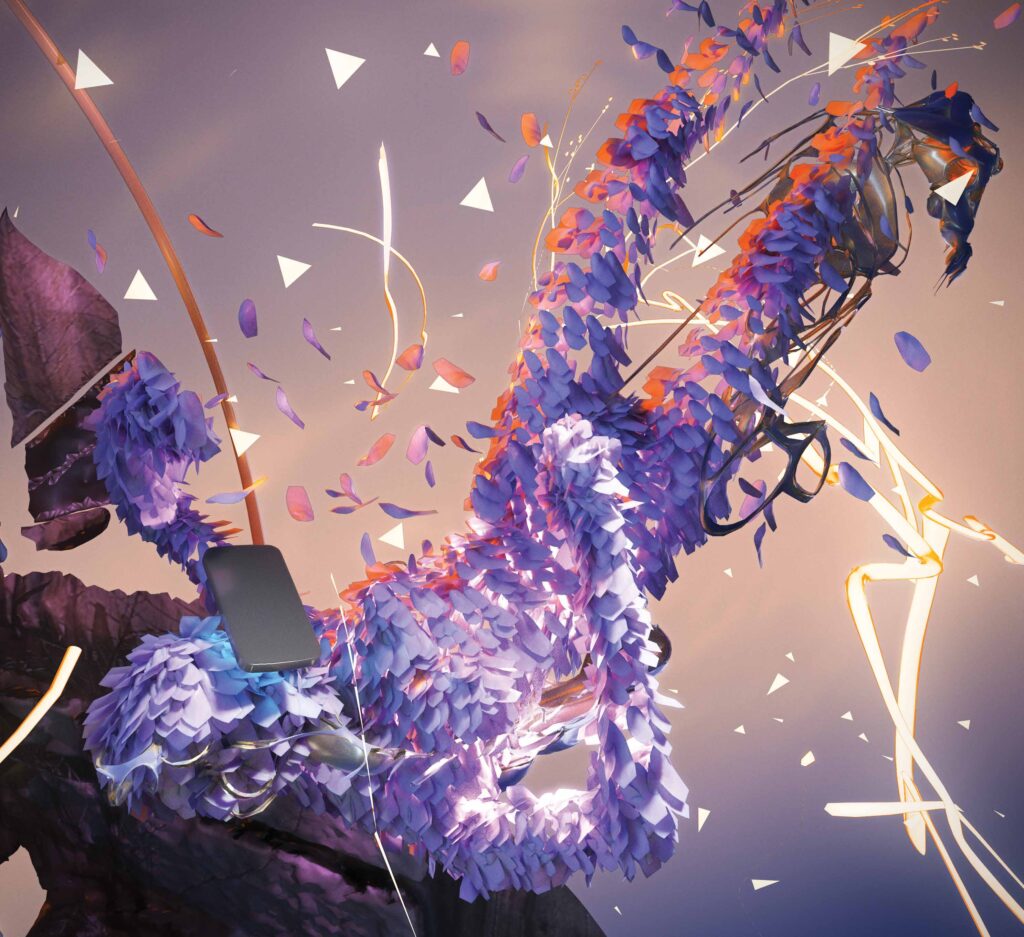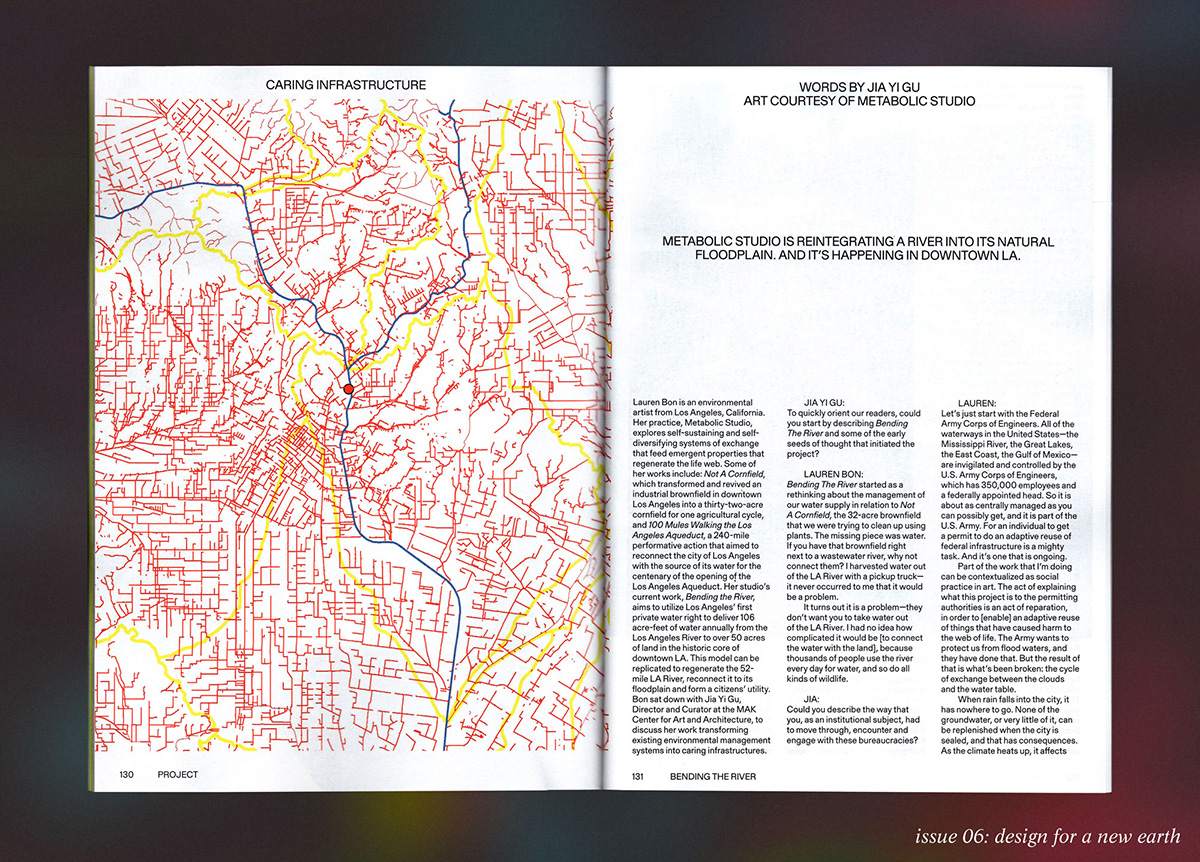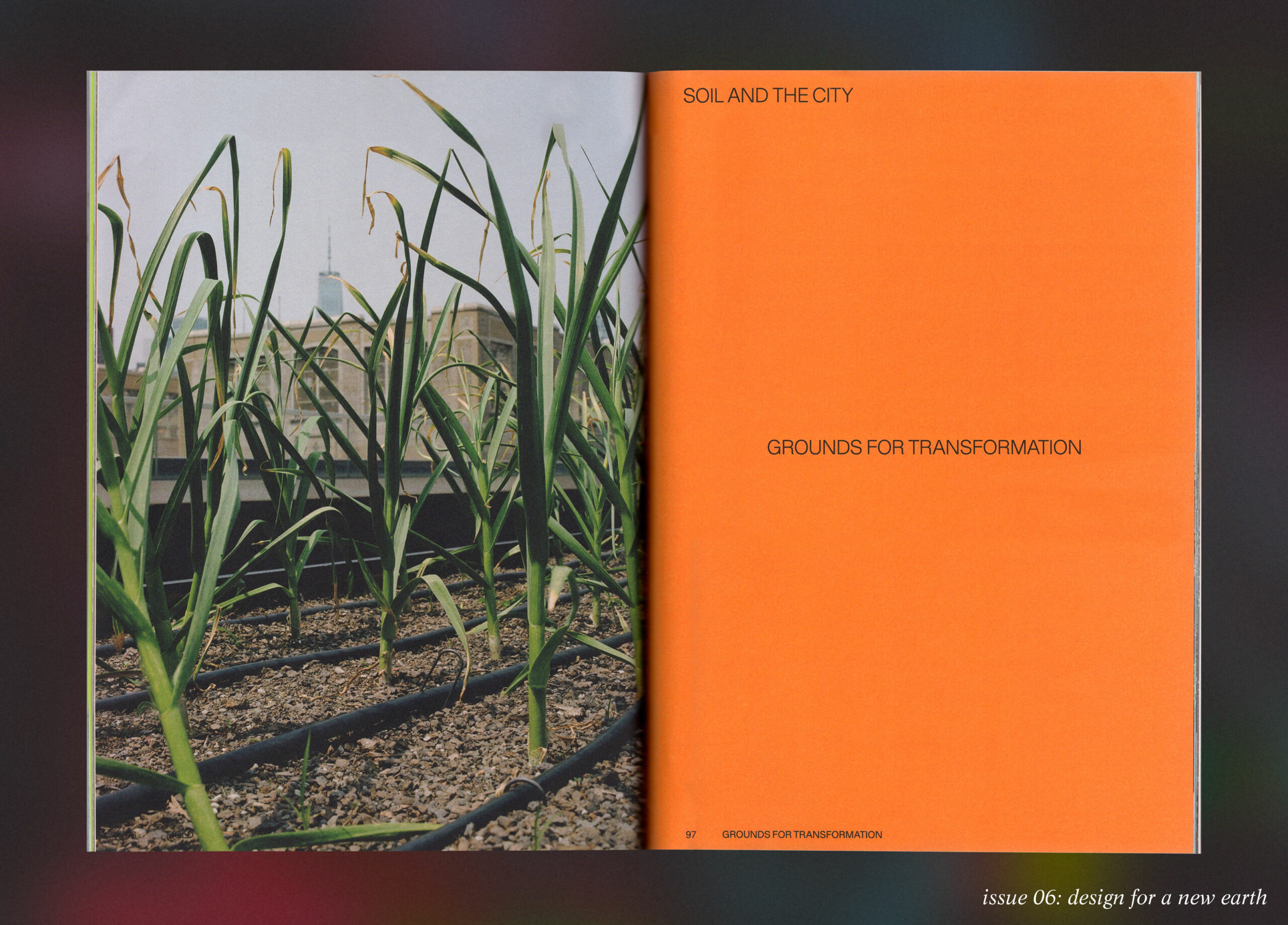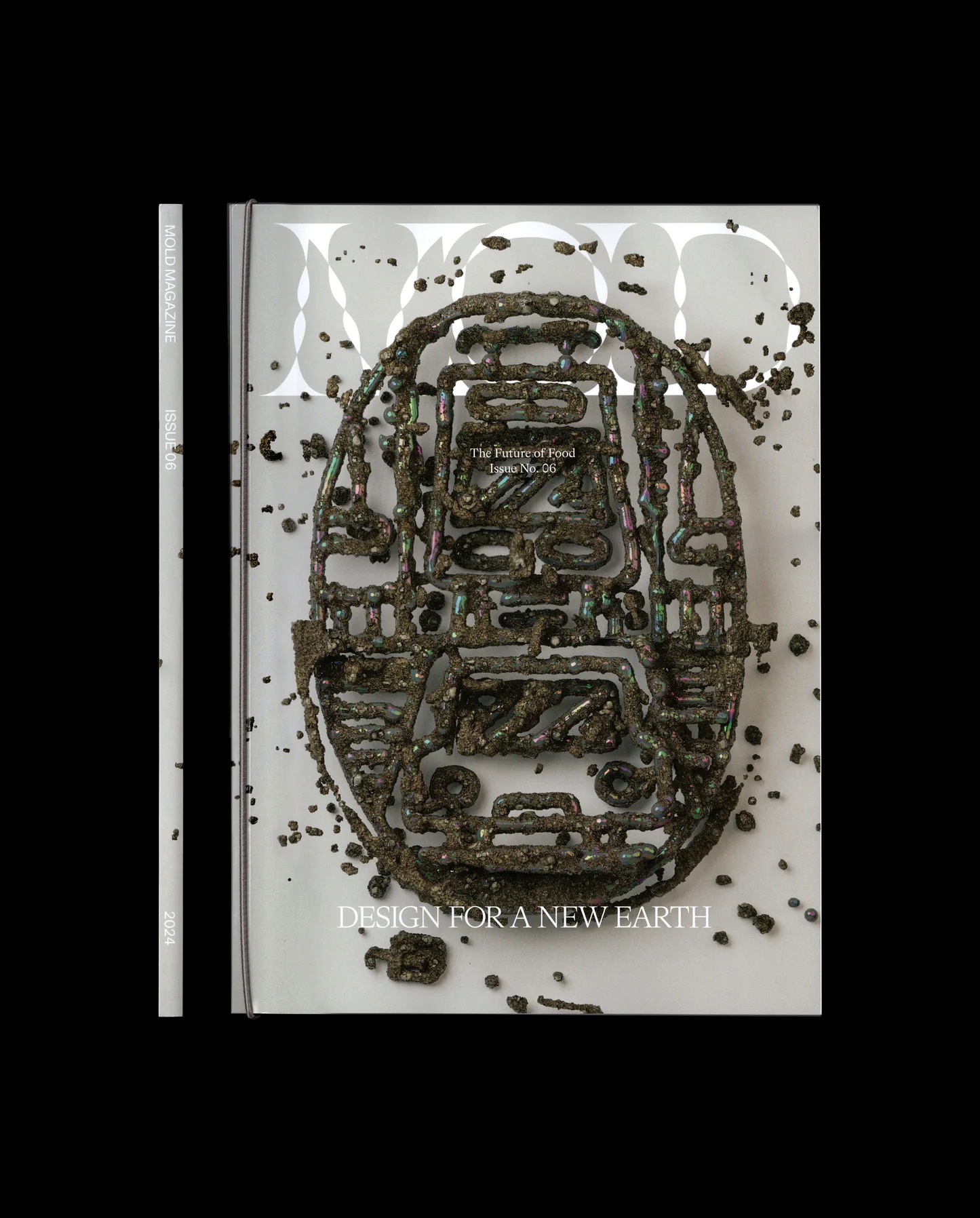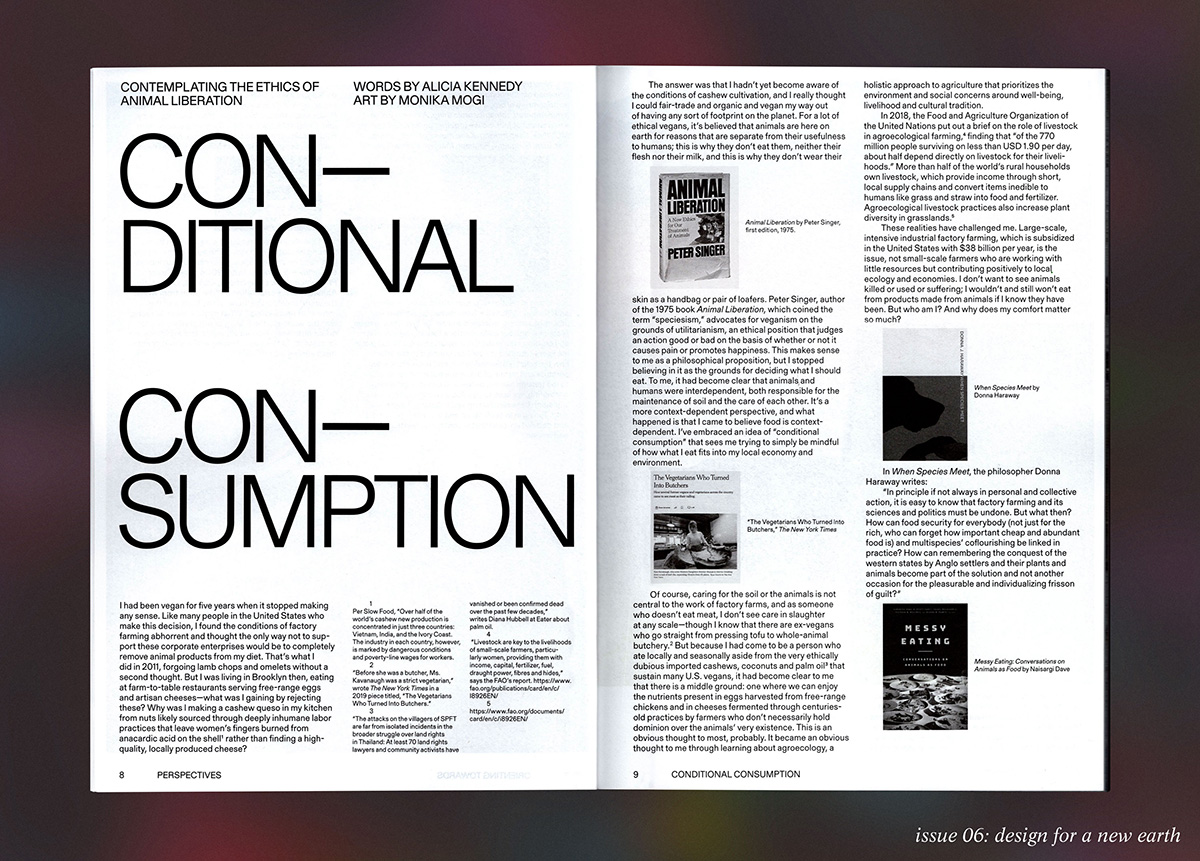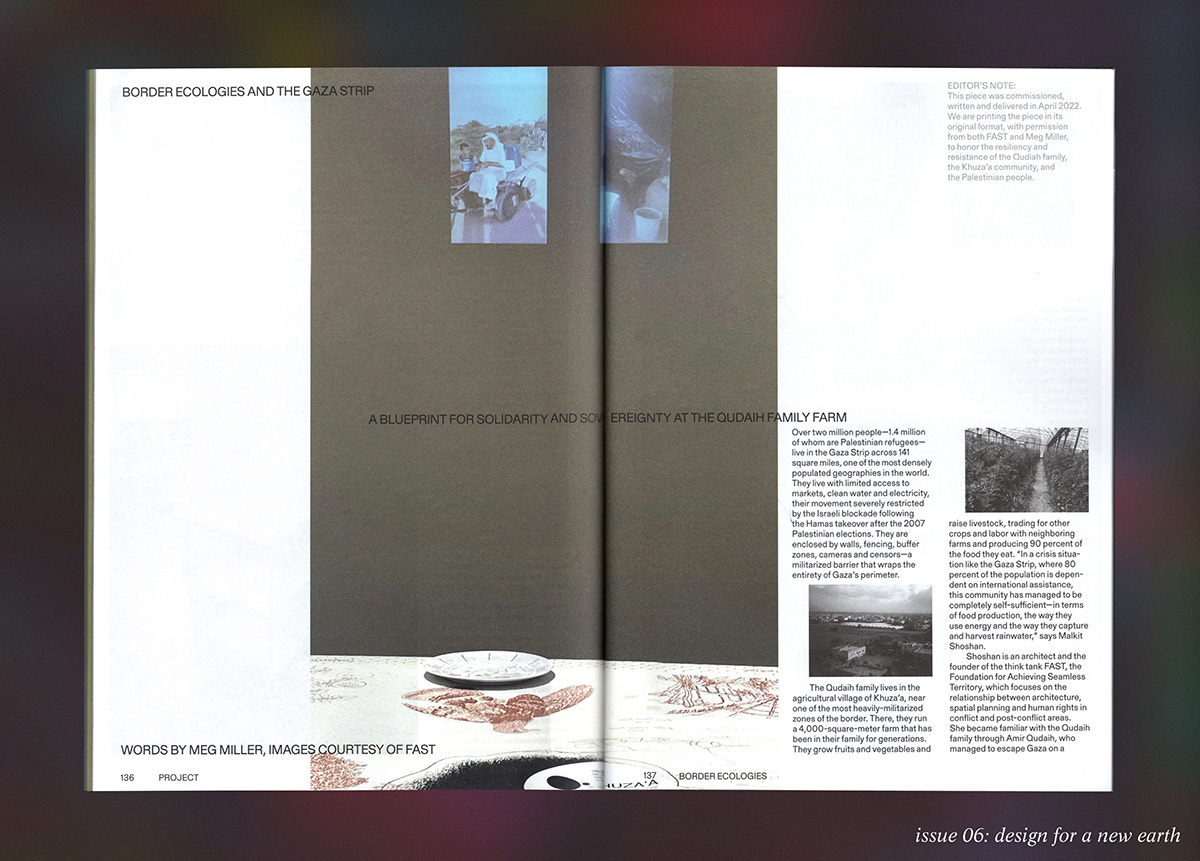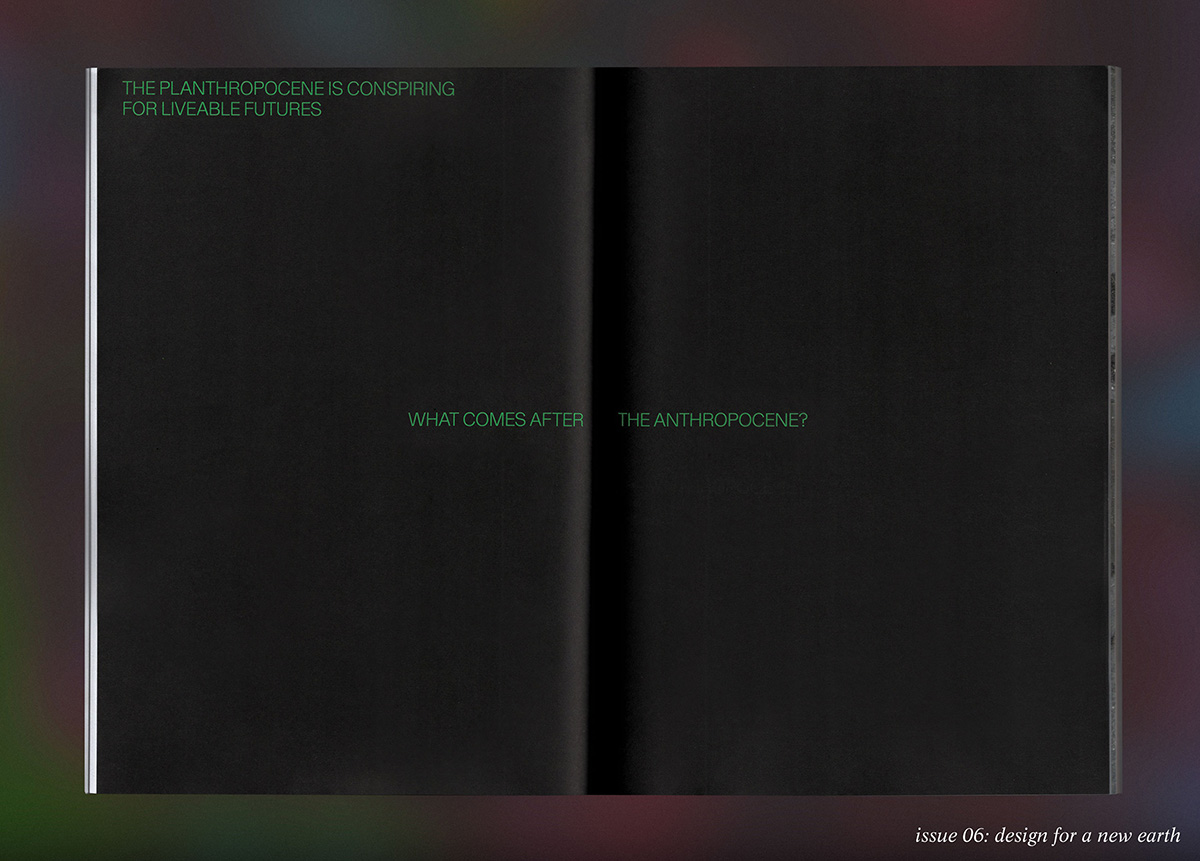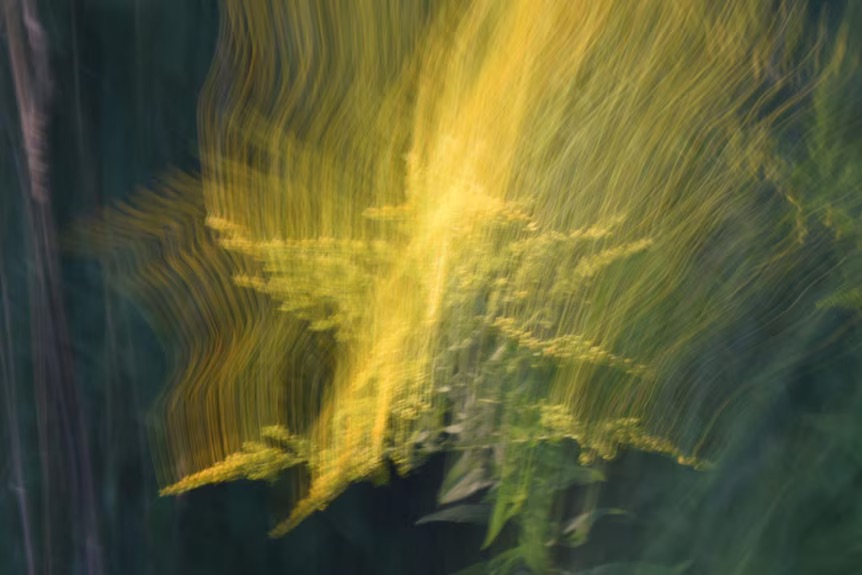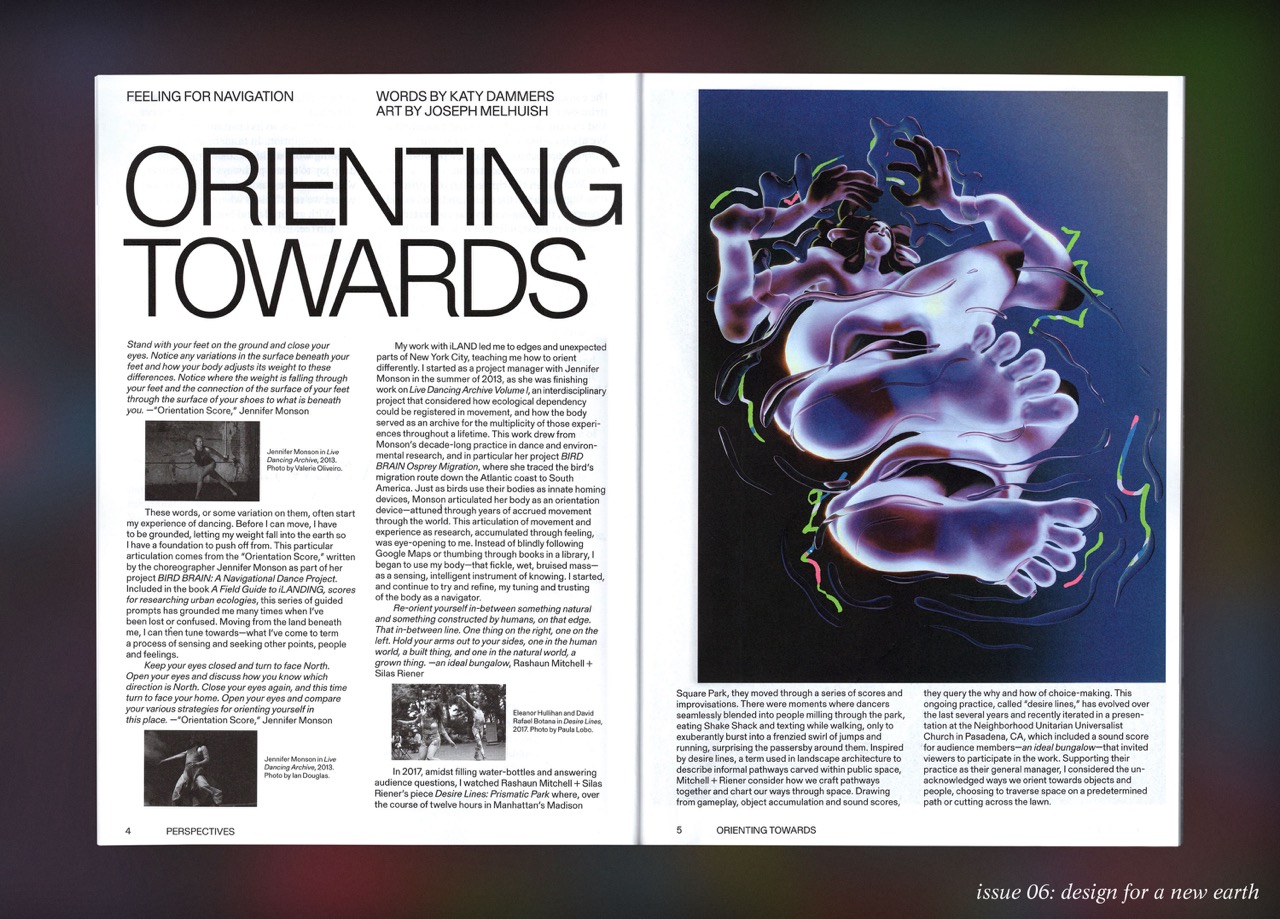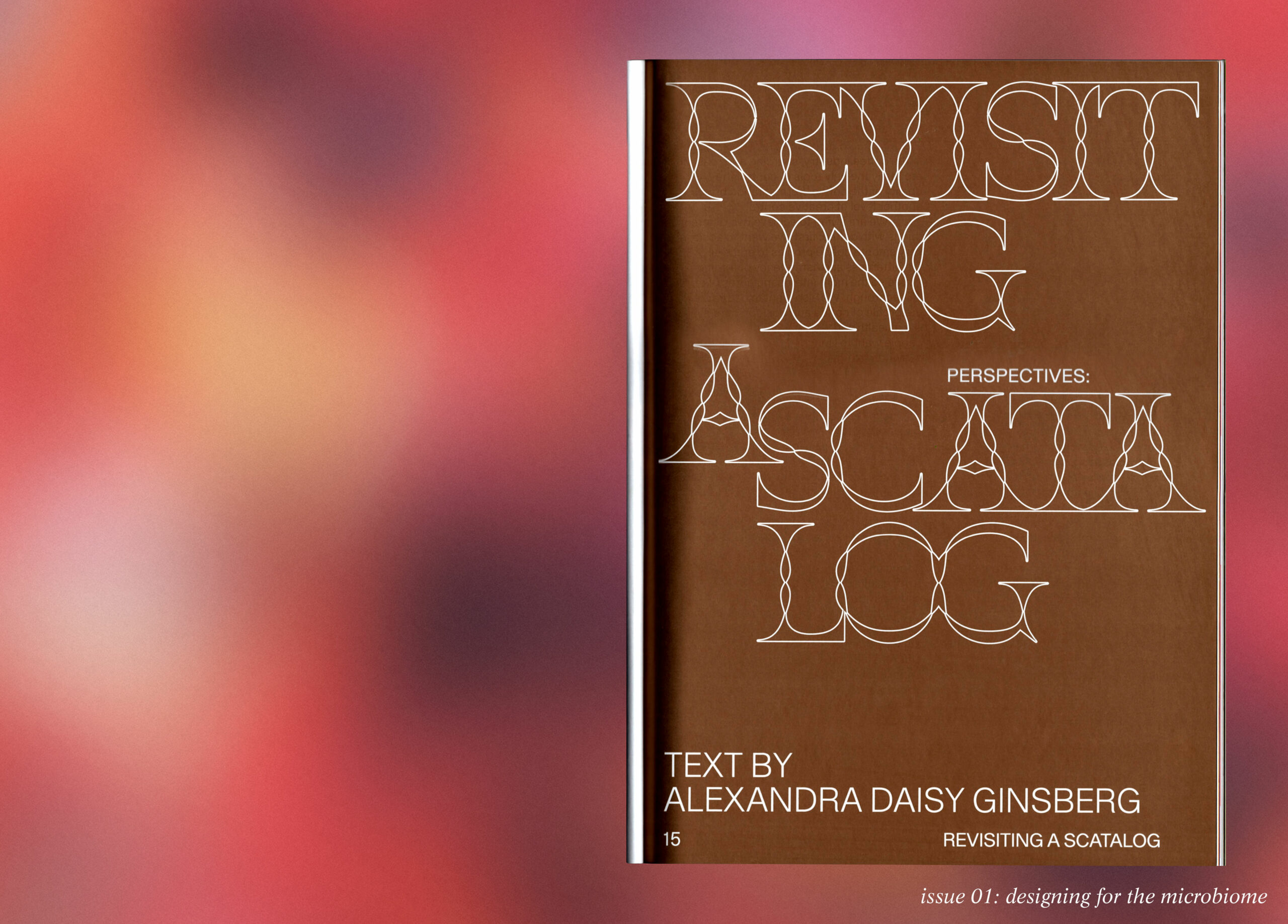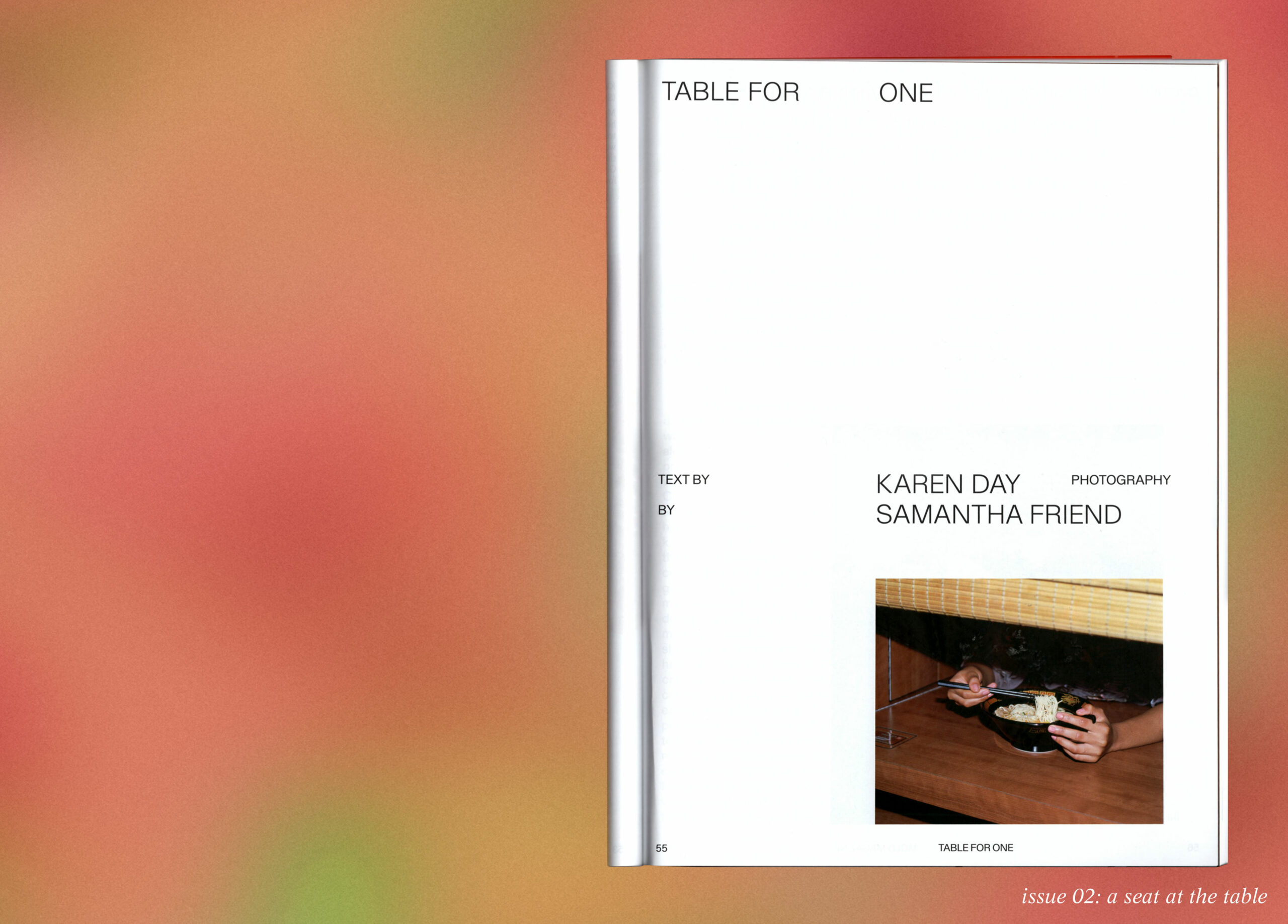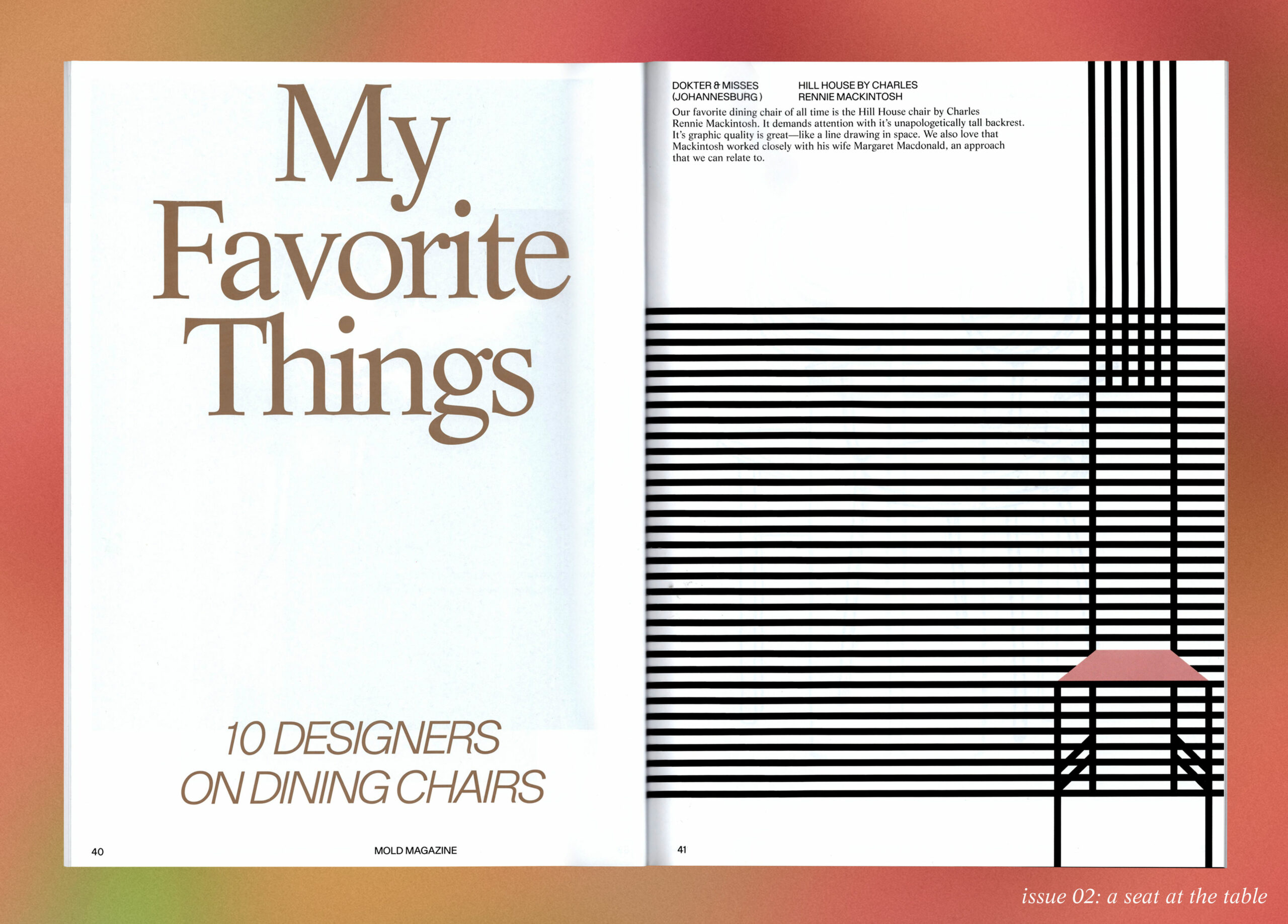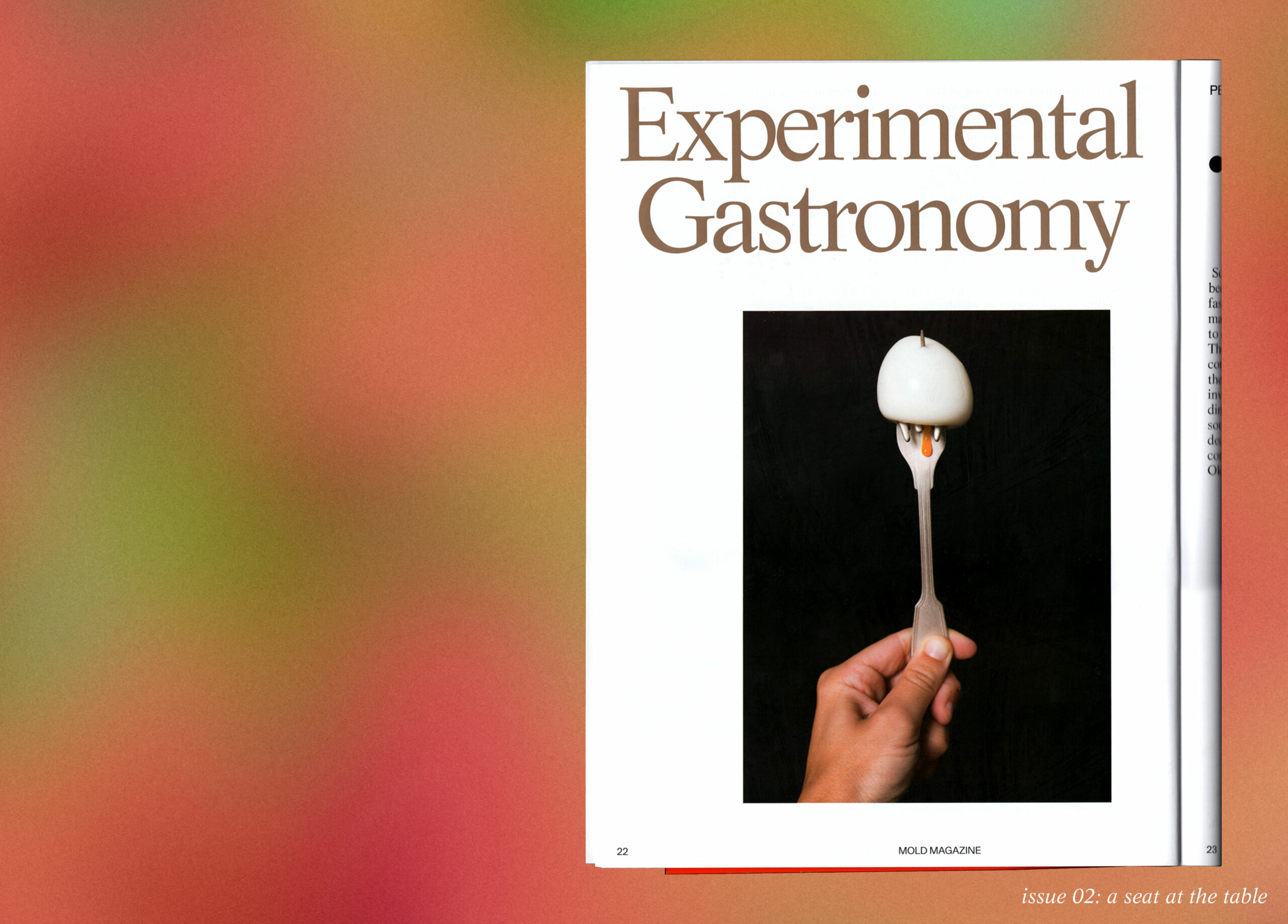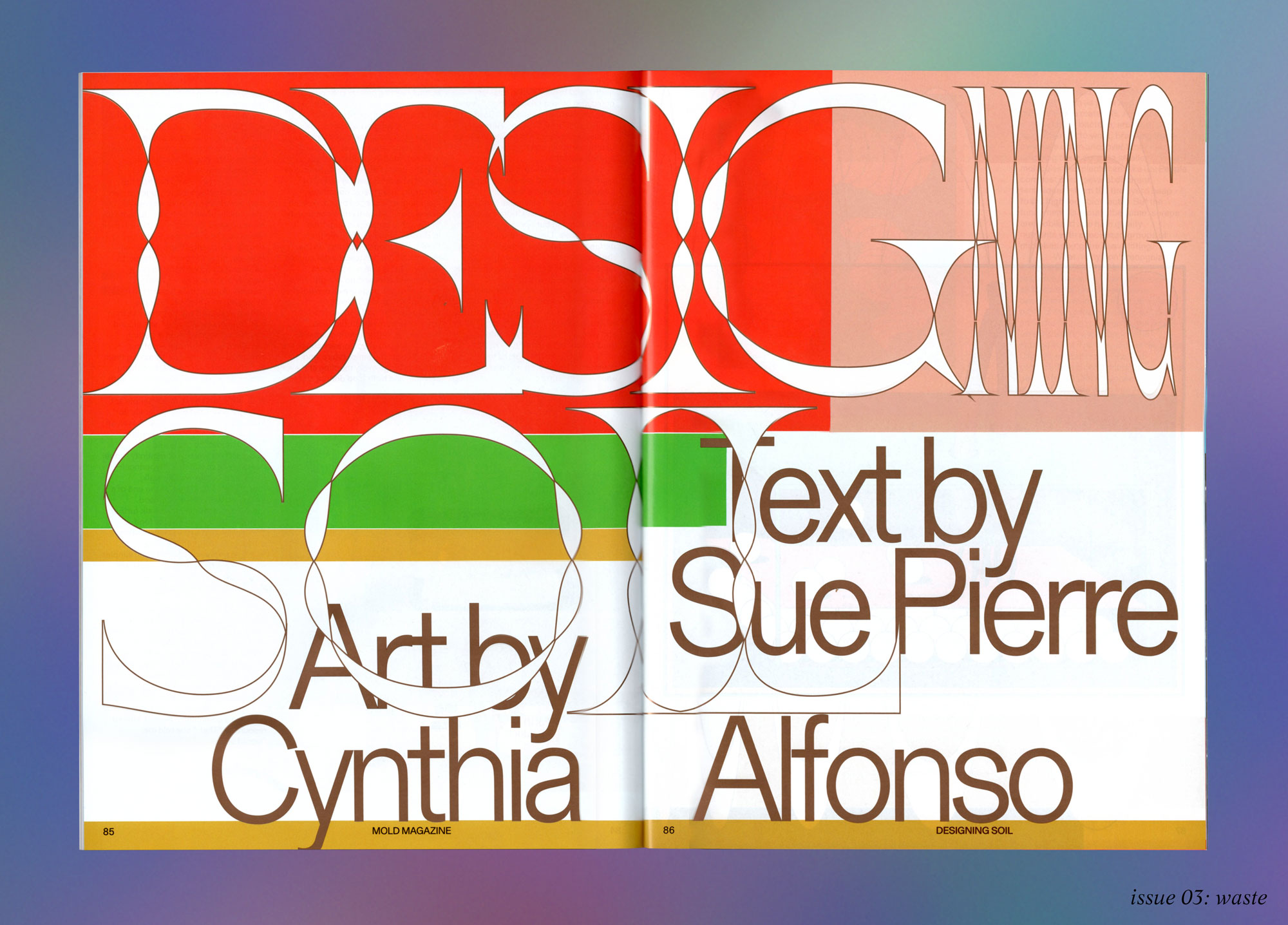From MOLD Magazine: Issue 04, Designing for the Senses. Order your limited edition issue here.
The senses connect our bodies to the world in order to survive it. Sight, sound, touch, smell and taste are languages that communicate aspects and nuances of our environments to our brains and allow us to read the world. The ways in which we understand these languages become our culture, simultaneously a reflection of the self and a connection between consciousness and the world.
Art by Studio Rolfes.
This sensor, the body, builds and drives culture, and meanwhile, culture forms the body—in a feedback loop. Increasingly, our culture is disappearing our bodies through technologies that mediate our sensory experiences. Prime examples of this are the participatory environments of virtual reality (VR) and augmented reality (AR), computer-generated realities that invite us to inhabit new worlds by immersing our senses in a veil of technological simulacra.
While many forays into the media of VR and AR are being driven by the gaming industry building what seems to be more avenues for escape, the technology is also being used by artists and researchers to create learning environments that inform and even attempt to build empathy and ecological awareness.
Popular VR experiences range anywhere from the mundane activity of leaf blowing in a suburban backyard1 to captaining a starship2, and though these activities may seem like distractions from a more immediate collective “reality,” they are also virtual theaters and even worlds in which we are invited to act out new ways of being. Could these theaters be precisely what is required to help train ourselves in more ecological approaches to living, including eating and producing food?
“Artists formulate their view of the world as well as their reflection of the medium. In contrast to game development, an artistic statement forms the basis for reshaping the work in VR art,” explains Tina Sauerlaender, director and head curator of Peer to Space3 and co-founder of Radiance, both VR art platforms, on the importance of artists’ role in developing VR.
Artistic practice is already an exercise in re-imagining the world, and unlike the languages of science and math, artistic inquiry is equipped to quickly dismantle one reality in order to produce a new one. For this reason, artists often move beyond common VR themes found in games that replicate contemporary culture or indulge our darker impulses—crashing a car into the side of a supermarket, shooting a gun, or punching a stranger in the face (in its press release, the ultra-violent VR game Gorn4 (2017) suggests, “The only limits to the carnage are your imagination and decency, in the most brutal and savage VR face-smashing game ever produced by man”). Artists, meanwhile, are using abstraction and conceptual exploration to move beyond the “ultra-real” and address the body and our senses in new ways, as well as exploring issues of food, ecology and sustainability.
Seed Vault5 (2016) by Magali Daniaux and Cédric Pigot, a VR experience for Oculus Rift, is based on the Svalbard Global Seed Vault. This ‘Doomsday’ seed bank is a long-term seed storage facility, located on a remote island in Arctic Norway. It represents the world’s largest collection of crop diversity. Artists Daniaux and Pigot took the architectural blueprints of the vault to construct an experience where a user can explore an imagined future of emptied out hallways of the facility until they come upon the Extraflower, a flower which stores a recorded poem from the last human being on Earth. Daniaux and Pigot designed a scent they call Seed (Fragrance) to accompany the experience. Described as a combination of “strong ionized and freezy notes,” the scent is meant to reinforce the cold sterility of the facility and perhaps evoke a sense of emptiness.
Extinction Park (2018) by Lara Torrance explores sustainability issues by allowing users to come in contact with the figures of extinct animals6. Inspired by the death of the last male northern white rhinoceros in 2018, marking the inevitable end of the species, Torrance says, “this is an ongoing project that I am going to expand until the space is filled with groups of extinct animals of the past, and the coming ones. [It is] a way to visualize the sixth mass extinction in our planet’s history and acts as a harsh reminder of mankind’s ability to wipe animals from the face of the Earth.” As the user traverses an undulating terrestrial floor composed of some kind of new, bluish conglomerate that defines an impossibly low horizon line, the ethereal traces of extinct animals come into the frame. Surrounded by stars, these animals become a kind of constellation before fading away into a night sky.
Another experience, Where does your quinoa come from? (2017) by badgrandpa, attempts to tell the complicated story of the quinoa grain and its position as an industrially farmed global crop in relation to the traditional harvesting practices of the native peoples of the Andes. Where does your quinoa come from? juxtaposes bizzare pixelated environments with photographs of Peruvian women adorned in traditional garb harvesting the grain. The walls of the rooms are impossibly flat, like navigating an early ‘80s Nintendo game. One enters the “main space” of the experience, a huge industrial-feeling room filled with rows and rows of computer-generated quinoa flowers, the conical peaks of the flowers providing a strange sensation of texture in an otherwise two dimensional landscape.
These artworks oscillate between simplistic informationals and visual spectacles. They allow us to explore the surface of current crises and dystopian futures through sight and sound. As Tina Sauerlaender says, “VR has the possibility to concretize learning because we experience it firsthand.”
While a few experiments in synthetic smell and touch exist via large-scale applications—dark rides or larger arcade games—there is growing interest in the technology’s ability to captivate the sense of taste. At this point, VR/AR clearly privileges the eyes and ears, our extroverted, outward-pointing senses, while taste can be thought of as more intimate in that we must literally ingest a substance in order to experience it. Carlos Giffoni, a product manager at Riot Games, helps decide the creative direction for one of the industry’s most popular computer games, League of Legends, which has over 100 million active players each month. In an interview with MOLD, Giffoni says while VR has made major strides in the last decades, it is simply not where it needs to be technologically to address smell and especially taste: “To seamlessly engage all of the senses, that’s the golden ticket. Once someone figures that out everything will change. I suspect it will have to do with synthetically triggering brain responses.”
Our senses build a corporeal architecture that consists of connective structures supporting and defining our internal selves and simultaneously erecting bridges to the external world. VR/AR have the ability to profoundly impact these connective structures. Examples of this include the successful implementation of VR/AR in experimental post-traumatic stress therapy and innovative empathy-building experiences. Max M. North and Sarah North, researchers and co-authors of Virtual Reality Therapy: An Innovative Paradigm (1996), first termed and pioneered Virtual Reality Therapy to help individuals overcome specific phobias through virtual simulations7. This same research is now being applied to several areas of cognitive neuroscience and is used to support soldiers and veterans experiencing PTSD. A project called Bravemind, led by a team of researchers at the University of Southern California, has developed Virtual Reality Exposure Therapy to help veterans from the Afghanistan and Iraq conflicts as well as Vietnam veterans8. Patients are directly confronted with feared situations, subjected to triggering sounds, bright lights and motion blasts while in physically safe environments, thus helping the brain to relearn its own trauma reactions.
However, here resides a vast ethical debate concerning this new technology and its implications, not only on our collective space but also our internal worlds. Knowing that simulated sensory stimulation has the potential to profoundly affect our most private selves, even altering our neural pathways, do we have the capacity to build complex VR/AR environments that won’t inadvertently wreak some kind of havoc on our subconscious? And do these disembodied experiences further alienate us from the very issues we are attempting to grapple with, or can they become powerful tools to educate and grow our ability to act and connect not only to ourselves but to each other and to nature?
While Earth is the terrestrial body whose elemental makeup, atmosphere and temperature create the conditions for life, the world, in an ontological sense, is constructed. The world is the product of collective definitions and imagining—in this way there may be many concurrent worlds, and in each one, human perception, apprehended through our bodies, acts as the sensor which receives the world and confirms it through our experience.
THE WAYS WHICH WE SURVIVE BECOME OUR CULTURE, SIMULTANEOUSLY A REFLECTION OF THE SELF.
So then, can we collectively reimagine the world? Or rather, reimagine a way out of a culture which has produced a “world” whose rates and modes of consumption are incongruent with Earth’s capacity to sustain life? In the face of so many impending systemic collapses—environmental, economic, socio-political—it is imperative that we radically shift ingrained cultural habits of hypercapitalism. The literary critic and political theorist Fredric Jameson wrote, “Someone once said that it is easier to imagine the end of the world than to imagine the end of capitalism.” Could VR and AR serve as an unlikely tool to help us reimagine our world/worlds?
The answer to that question may lie somewhere between the extremes of a technological futurism that proposes far-fetched conditions of non-corporeal consciousness and our most primal obligations to the body. The body is a duty and a tool—we all must sleep, breathe, eat, shit and procreate in order to survive, and animals have evolved specific sensory responses to navigate their environments to this end. So, while the senses are our tools for survival, they are also our joy, our locus for desire and action, a vessel of unyielding perception catapulting us into yet unimagined futures.
